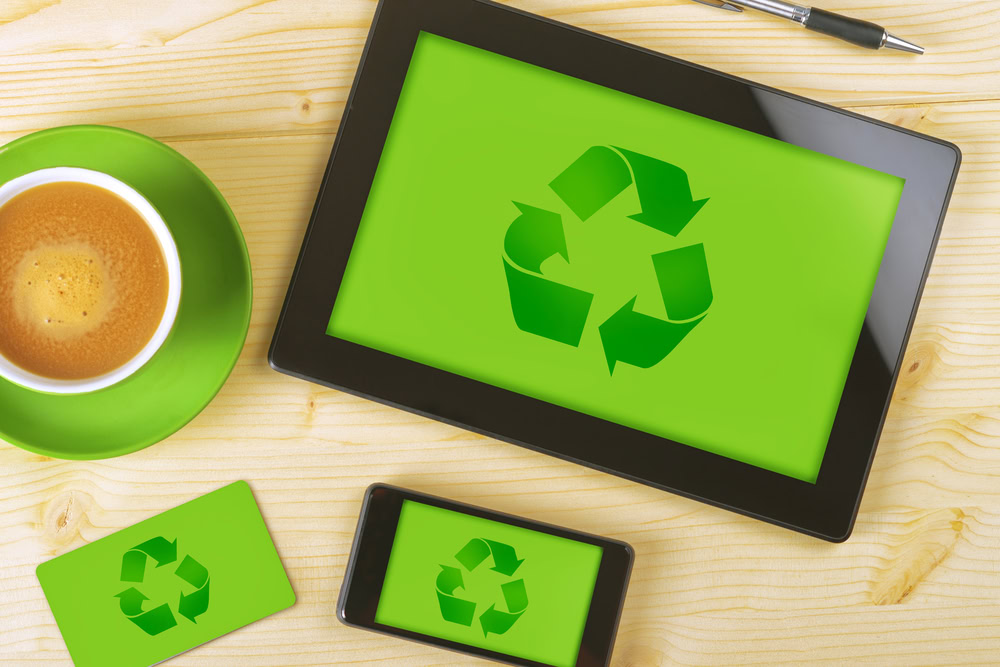Affiliate links on Android Authority may earn us a commission. Learn more.
Error 53: E-waste, the “right to repair” and why no one is confronting the problem

E-waste is a growing problem. Discarded electronics are estimated to exceed 65 million tonnes by 2017. Our rapacious appetite for new gadgets fuels the problem because we dispose of gadgets much sooner than their expected life span. Planned obsolescence doesn’t help and our e-waste management systems are sadly lacking.
So what is to be done about a problem that nobody wants to confront head-on?

Refurb Nation
You may remember that Tim Cook was recently in the news for once again being rebuffed by the Indian Government regarding his plan to sell refurbished iPhones in the country. While this could be seen as a simple cash grab – offloading second-hand products to a developing country – it is also part of Apple’s wider environmental program. Sure, there’s money to be made in reselling used phones, but it’s also about doing something with discarded phones that doesn’t involve landfill.
FairphoneE-waste includes not just smartphones, but also TVs, laptops, tablets, microwaves and even refrigerators. Hundreds of millions of mobile phones are discarded each year and roughly 90% of them end up in landfill (at least in the U.S.). Improving our e-waste management could halve the carbon footprint of your average smartphone. Extending the life of a smartphone by even one year will cut its carbon imprint by a third.
Extending the life of a smartphone by even one year will cut its carbon imprint by a third.
Resale vs recycle
With a global used smartphone market worth a half billion dollars, refurbishing and reselling second-hand phones is big business. But when products are designed in a way that makes them prone to bending, breaking or otherwise falling apart, we have a problem. Costly and complicated repair procedures only add to that problem. And both of these issues are further compounded by the eternal quest for thinner smartphones that makes them increasingly difficult to recycle.
The eternal quest for thinner smartphones makes them increasingly difficult to recycle.
This is because the harder a device is to pull apart, the harder it is to re-use the components held inside. But it’s not just about retooling old smartphone displays into fancy GameBoys.
There are a lot of minerals and precious metals in a smartphone that are in increasingly short supply. This is why you see backyard recyclers in Africa burning the plastic off electrical wires to reveal the copper underneath: so they can make new USB cables out of them.
Half a million phones per day
While this is a horrible image, at least many African countries and others like China actively recycle used products. Most of America’s e-waste goes into landfill. And America produces a lot of e-waste. According to some (old) estimates, Americans discard half a million smartphones per day. That contributes to over 10 million tonnes of e-waste per year, just from the U.S..
The U.S. contributes to over 10 million tonnes of e-waste per year, with 90% of discarded smartphones ending up in landfill.
But those figures only include the phones that even have a chance of being recycled. Many more are hoarded for nostalgic or data retention purposes. While hoarding is preferential to landfill, that doesn’t mean we use these devices for any longer. Rather, they end up in drawers, gathering dust. They may not be adding to the worst of the problem, but they’re still contributing to it.
So while some of us may not exactly throw away old electronics, we’re still buying new gadgets at a ludicrous pace. But the dangers of not recycling are not just related to product life cycles. There’s also the damage plastics do to the environment, issues of chemicals leaching into soil and increasingly scarce rare earth metals to consider.
Rare earth metals
The name alone should inform you that the last place these metals should end up is in landfill. Billions of years to form, a few months between mining, refinement and insertion into an electronic gadget, a year or two of use at best and then into a landfill where those rare metals are dispersed, unlikely to ever be used again. Fortunately, the tides of change are slowly starting to appear.
California was the first U.S. state to pass e-recycling laws to restrict the amount of consumer electronics that end up in landfill.
California was the first U.S. state to pass e-recycling laws to restrict the amount of consumer electronics that end up in landfill. There is also a burgeoning e-recycling industry in the U.S. and a very established one in China, where a lot of the world’s e-waste ends up. Recycling old components, metals and power sources is not only better for the environment, it can generate a lot of money as well.
For example, Guiyu is a region in China made up of twenty or so small villages. More than 5,000 family-run recycling shops operate in the region and process a million and a half tons of e-waste annually. This produces $75 million dollars in revenue for the shops, but it also makes the most of an otherwise wasted product. But again, this misses the point. Why don’t we repair gadgets before they end up shipped to Asia as scrap?

“Right to repair” laws
In part it is because electronic gadgets typically break easily. Planned obsolescence is a concept we have all come to understand but not really object to. We understand that a smartphone is only really designed to last for a couple of years. But instead of doing something to change that fact we simply accept it and upgrade our phones every two years. But recent changes in the EU will soon force manufacturers to design more durable and more easily repairable devices to prolong their life spans.
Recent changes in the EU will soon force manufacturers to design more durable and more easily repairable devices
Nicknamed “right to repair” laws, these regulations are part of what’s called a circular economy. As the EU Council put it in their resolution passed just two weeks ago: “This plan aims to reduce waste and keep the value of products, materials and resources in the economy for as long as possible.” But this isn’t just a thing in the EU. Several U.S. states are currently debating whether or not to introduce the same kind of legislation (unfortunately, New York’s state’s proposal was recently shot down).
[related_videos title=”LATEST VIDEO REVIEWS:” align=”center” type=”custom” videos=”701567,701757,701387,700315″]
But the right to repair has its detractors as well as its advocates. Through government filings, The Huffington Post discovered that Apple has lobbied heavily on the topic, including in the new York state case just mentioned. It doesn’t take a genius to realize the people supporting the right to repair tend to be consumers and small business owners, while the naysayers tend to be the corporate behemoths that benefit from you constantly updating your electronic gadgetry.
Apple lobbied against the introduction of laws that would force them to make Apple products easier to repair.
As you may have guessed, Apple lobbied against the introduction of laws that would force them to make Apple products more durable and easier to repair. The company would undoubtedly cite questions of technical knowledge, trade secrets, superior quality assurance and so on as its reasons for not wanting the local repair shop to cheaply repair a cracked iPhone display.
But we all know the real reason is because Apple wants you to replace your broken iPhone rather than get your current one repaired.
Error 53
This is why official Apple repairs cost so much money – quite often almost the same as an entirely new device. Unless Apple can profit off the repair, it wants to make the process as difficult as possible. It is even willing to punish those that don’t subscribe to its approach. Which brings us back to the title of this article and the infamous Error 53 debacle that afflicted thousands of iPhone 6 owners and resulted in legal action against Apple.
The long story short is that following an iOS update, thousands of iPhone 6 owners got an Error 53 message on a bricked device. These people had unwittingly taken their iPhones to an unauthorized service center to repair a broken display or malfunctioning home button. The update detected this activity and rendered the devices useless. The iPhone owners banded together and brought a class-action lawsuit against Apple. Apple eventually capitulated and reimbursed those affected.
What this demonstrates is how the tech companies – and carriers like them – manipulate the system to make themselves look like environmentally conscious entities but secretly undermine laws that would really help reduce the e-waste problem. For obvious reasons, they would prefer to sell you a new product and have your old one in a landfill or dealt with by a recycling program than have you repair and continue to use your existing product for longer.
What to do now?
This is obviously a problem. But until we as consumers are willing to do something about it nothing is likely to change. Large companies like Apple will continue to lobby against right to repair legislation and cheaper repairs on more durable products while claiming they are environmentally responsible. The EU may have made a bold first move but it will take years to make manufacturers comply.
Until then, the only thing we can really do is look after our devices, hold onto them for a bit longer and then pass them on to responsible recycling programs. We really shouldn’t expect anything different from corporations – Apple or otherwise. They are businesses, out to make money. So until fixing the problem benefits their bottom line, we can’t realistically expect to them to solve the problem. At least in the case of Apple’s rebuttal in India, there might be an alternative solution.
What do you do with your old smartphones? How many do you have in a drawer somewhere?